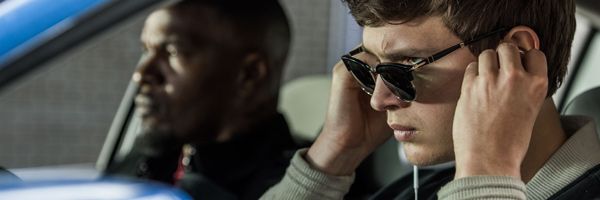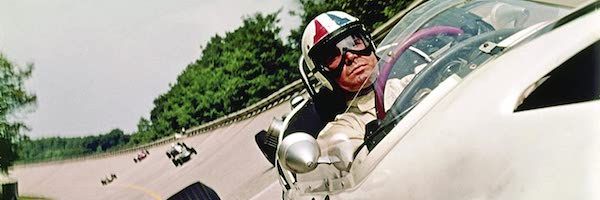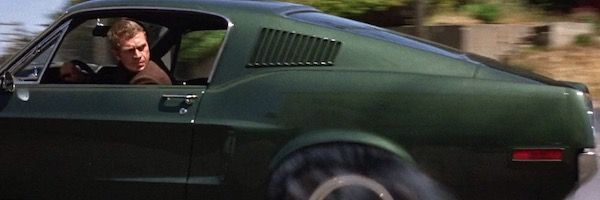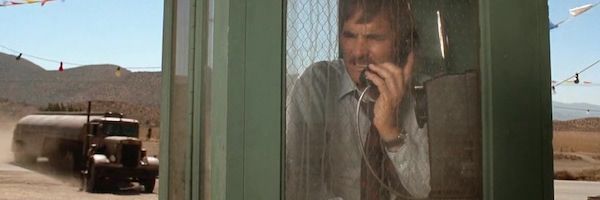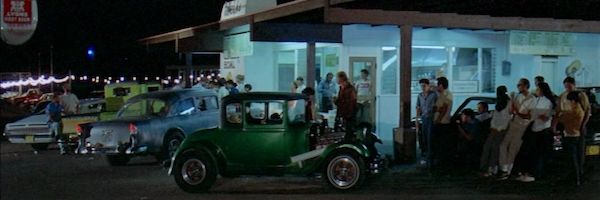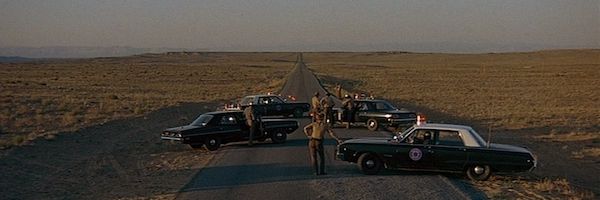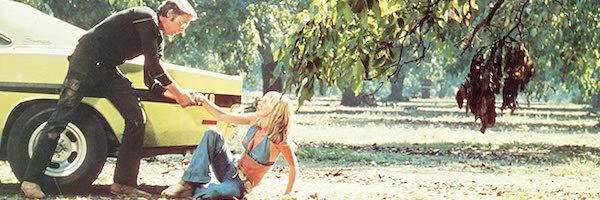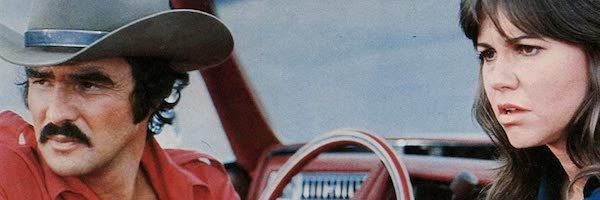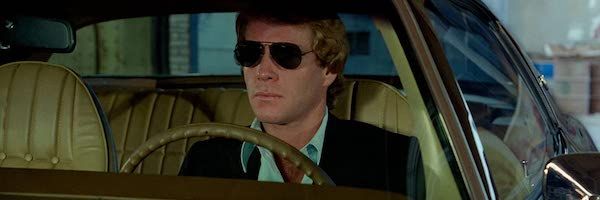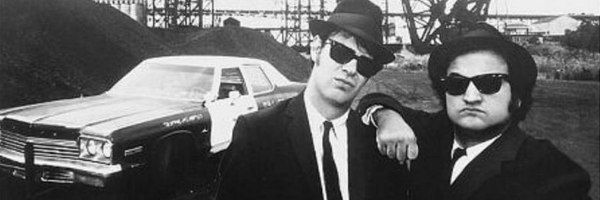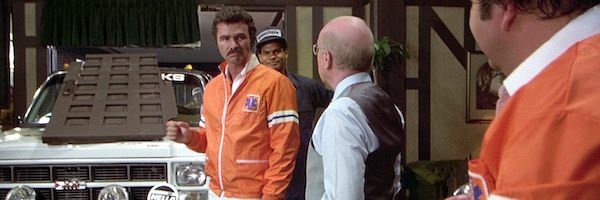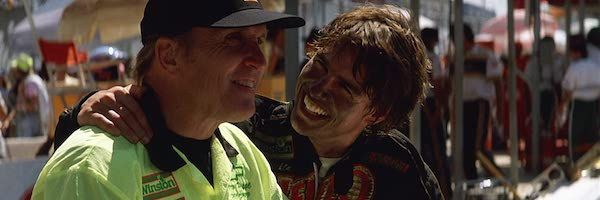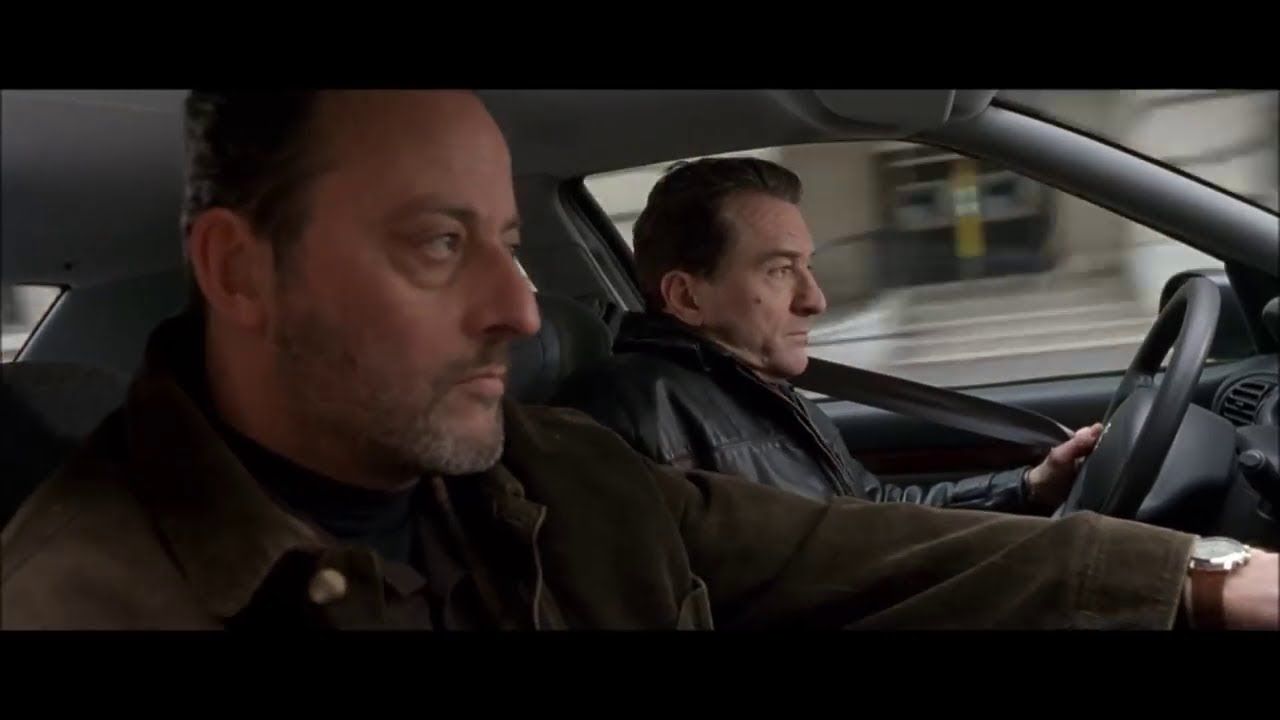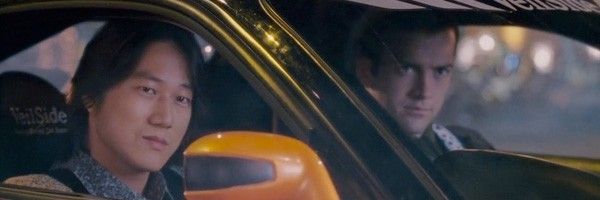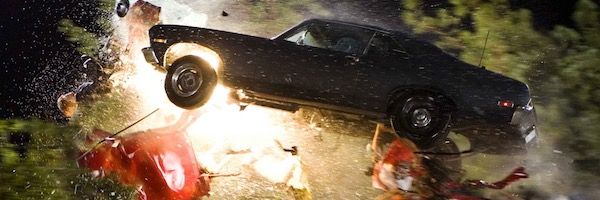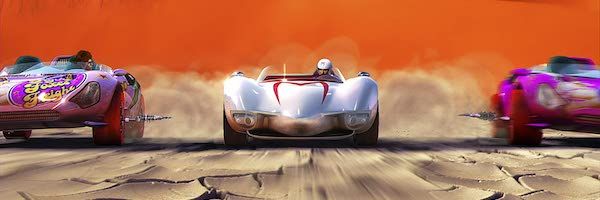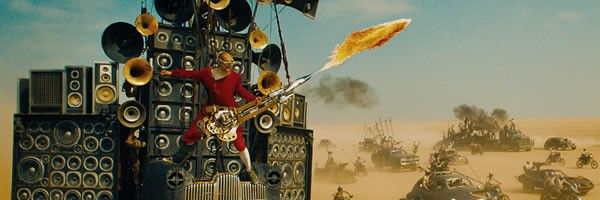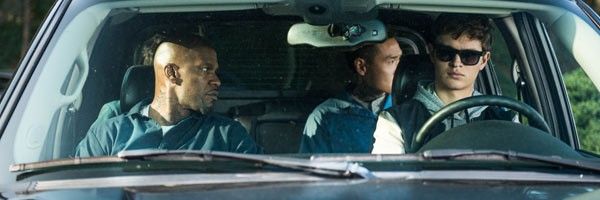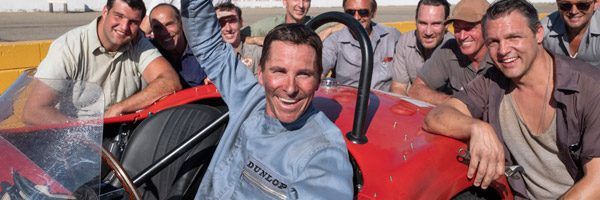The automobile has provided a backbone for modern life almost as long as movie theatres gave drivers a destination. Perhaps that’s why vehicles and movies feel so intrinsically linked:
Cars are a conveyance for the body, movies are one for the imagination. Moreover, movies have repeatedly showcased the possibilities of what man can do in cars - first, to build and perfect them, and later, to push them to unimaginable feats of speed, strength and endurance. Or, if nothing else, movies taught us to appreciate and even fetishize their design and power; as a prop or plot device, audiences learned to associate specific vehicles with both tangible and metaphorical goals to attain, representing freedom or opportunity just as much as beauty, wealth or status.
As a result, choosing the best or even quintessential Car Movies is a challenging task. Not just individual films but entire franchises revolve around the cars and trucks characters pilot - in races, in chases, pursuits and escapes, as prizes to be won and locations where drama unfolds. Cars engineered for one scene or sequence evolved into the singular reason to watch that movie, years or even decades later. Advancing technology--and increasingly fearless drivers--rendered early trailblazers obsolete with stunts that thrill the pulse and eclipse expectations. Nevertheless, the choices listed below highlight more than a century of cars on screen, some for the ones that appear on screen and some for what people do when they sit in the driver’s seat, but all celebrating the marriage of movies and motor vehicles.
Grand Prix (1966)
John Frankenheimer claims two spots on this list, starting with this operatic story set against the backdrop of Formula 1 racing and featuring some of the most intimate and unique racing footage audience had seen until then. Building on the premise of an all-star, international cast a la war films or other dramas from the era, Frankenheimer assembled an ensemble featuring stars from America (James Garner), France (Yves Montand), Italy (Antonio Sabato) and Japan (Toshiro Mifune) to adequately populate a showcase for world-class drivers from across the globe. What’s remarkable about the film today is how well the melodrama works against the racing footage; Garner is equal to the task of providing viewers with a driver to cheer who isn’t himself sure how he feels about the risks he’s taking, and it lends the whole film a thrilling but decidedly more contemplative tone. As the same time, Frankenheimer’s depiction of the racing teams was so convincing and thoughtful that he utilized unprecedented access to create an experience that put the audience in the drivers seat not just physically, but emotionally.
Bullitt (1968)
Playing San Francisco detective Frank Bullitt, Steve McQueen not only certified his own legendary status as a gearhead but set the template for cool, capable drivers for generations to come. Director Peter Yates’ juxtaposition of spartan dialogue and complex plotting keep audiences guessing as Bullitt attempts to protect a mob informant, while McQueen coasts through one scene after the next, unflappable, as complications (and bodies) pile up, all to the sound of Lalo Schifrin’s jazzy score. But the film’s centerpiece chase sequence, involving McQueen himself driving a Ford Mustang and his mysterious foe in a Dodge Charger, literally revolutionized car chases across the industry. Not only did McQueen’s piloting give the sequence riveting verisimilitude, but the choreography and intensity of the sequence--involving speeds of over 110 miles an hour--set a bar the rest of the industry would race to keep up with in decades to come.
The Italian Job (1969)
Not to be confused with the occasionally engaging 2003 remake which inventively figured out a way to circumnavigate traffic around Los Angeles, Peter Collinson’s original utilizes the same car (itself rebooted 30+ years later) to stage a thrilling heist at the height of the “caper” era when every star in the world wanted to command his own crew for a job netting a big payday after taking big risks. What’s maybe most surprising about the remake--which many will likely know better--is the way in which it borrows heavily from the original, not just using Mini Coopers but creating an escape route taking the thieves through massive tunnels. But propelled by wry English humor and a classic, jazzy score by Quincy Jones, the film fits as snugly in the annals of car movie history as a Mini in the tiniest parking spot.
Duel (1971)
As Steven Spielberg’s first feature-length film, this story about a driver (Dennis Weaver) unrelentingly pursued by a tank truck across the Mojave Desert sometimes feels like a training course for a future virtuoso mastering the tools of his medium. But there are good reasons that Universal Pictures expanded what was meant to be a television movie to feature length: Spielberg expertly captures the mystery and terror of this unstoppable, and unknowable force as it bears down upon the hapless driver, who certainly didn’t do enough in his own car to warrant such a maniacal, deadly response. Constantly reinventing ways to film each encounter to maximize the drama and keep the experience engaging, Spielberg turned Richard Matheson’s short-story source material into an endurance test, and a gobsmacking benchmark for fledgling filmmakers to meet.
Two-Lane Blacktop (1971)
That this film and Vanishing Point arrived in the same year was a godsend for gearheads and moviegoers everywhere, even if neither film made much of an impression at the time at the box office. Both languished on the margins of the release schedule only to much later earn the accolades they deserved. Starring musicians James Taylor and Dennis Wilson (the latter of the Beach Boys) as, respectively, Driver and Mechanic, Hellman’s film follows the two automobile enthusiasts as they indulge their drifter’s lifestyle across the country while fixing up their 1955 Chevrolet 150, occasionally waging money on races, jockeying with GTO (the great Warren Oates), and reflecting on an existence that doesn’t mean much outside of the quarter-mile of track between the start and finish lines. Taylor and Wilson make compelling sphinx-like leads for audience members to project their thoughts and feelings onto, as the repeated cycle of their transient, competitive lifestyle reiterates just how fast you can get there when your destination is nowhere in particular.
Vanishing Point (1971)
Even if Richard C. Sarafian’s 1971 film was “merely” the inspiration for the car whose hood Zoe Bell rides in Death Proof, it would merit inclusion in our list. But alongside Two-Lane Blacktop and The Driver, Sarafian’s film burnishes the zen-driver myth and then some with its story of a disaffected ex-cop delivering a white 1970 Dodge Challenger across country as an increasing army of cops follow him in pursuit. Kowalski, played by Barry Newman, blazes a trail from Colorado to California, set to a radio broadcast by Super Soul (Cleavon Little) that both creates mood and inspires reflection, both for the audience and for Kowalski. As pure as any of those other films even set to a slightly poppier soundtrack, Vanishing Point earned its cult status honestly, combining propulsive rock & roll energy and existential reflection in a perfect balance.
Dirty Mary, Crazy Larry (1974)
It’s amazing how many risks stunt drivers took in the 1970s, in films that seemed to spend more money on destruction than on a script. John Hough’s 1974 adaptation of the 1963 novel "The Chase" features more action in its trailer than some of the movies on this list do in their entire run time. Transitioning from motorcycles to muscle cars--another Dodge Charger in the vein of Vanishing Point, suped up with a V-8 engine allowing it to evade apprehension by the cops--Easy Rider star Peter Fonda plays half of the eponymous duo, who teams up with Susan George’s Mary after extorting $150,000 from a supermarket manager in a bid to finance dreams of NASCAR auto racing. While so many of these movies feature widespread vehicular destruction, few have so many close calls like this one does that feel as if the drivers and filmmakers following them simply closed their eyes, raced through the stunt and hoped for the best.
Smokey and the Bandit (1977)
Quentin Tarantino drew more than vaguely upon the relationship between Burt Reynolds and stuntman-turned-filmmaker Hal Needham when crafting the central Rick Dalton-Cliff Booth dynamic in Once Upon a Time... in Hollywood, but never got to this stage in their career: 1970s box office champ Reynolds plays a bootlegger distracting the fuzz from his truck-driving partner as they attempt to carry a payload of Coors from Atlanta to Texarkana. Reynolds’ smirking, joyful, fourth-wall-breaking Bandit is as iconic a hero in this genre’s rogues gallery as any ever created, especially opposite Sally Field as an adorably sexy runaway bride captivated by her driver. Meanwhile, Jackie Gleason’s Smokey provides a gloriously exasperated antagonist not just to oppose Reynolds’ charmer, but lend a fascinating study in opposites as his police cruiser endures indefatigable abuse while Bandit’s Trans Am pirouettes out of one risky scenario after another.
The Driver (1978)
It should come as no surprise that writer-director Walter Hill envisioned Steve McQueen for the lead role in his second film, a story about a stoic getaway driver outsmarting not only the authorities but his double-crossing accomplices. But even if McQueen deemed it too similar to his previous work, Ryan O’Neal makes an outstanding replacement in this incredible predecessor to Nicolas Winding Refn’s Drive, which Refn knew only vaguely when he mounted his own tale of high-speed crime more than 30 years later. The cat-and-mouse game between O’Neal as the nameless title character and The Detective gives the film a fantastic dramatic charge - one almost as intense as the driving sequences themselves, which are delightfully rough in terms of narrow escapes and unhappy collisions, evoking an unforgiving but exhilarating sense of realism. Echoing some of the elements of Monte Hellman’s meditative Two-Lane Blacktop with an added dollop of samurai poetry, The Driver remains an often-overlooked gem in the history of car and car-chase movies.
The Blues Brothers (1980)
Fresh off of the vehicular mayhem that ended National Lampoon’s Animal House, director John Landis re-teamed with star John Belushi for an “adaptation” of the recurring musical sketch from Saturday Night Live featuring Belushi and Dan Aykroyd, sending the duo on a cross-country trek to reunite their old band, and redeem their past misdeeds. The film’s focus on vehicles strictly emphasizes quantity over quality; Jake and Elwood drive a beat-up, decommissioned police car, and they’re pursued by several dozen cruisers that are all subsequently damaged or smashed. In fact, for vehicular damage, there are few movies before or since with a higher collision count. But even if not all of the car stunts are “possible,” the movie’s affection for creating throat-clearing comedic scenarios involving automobiles remains almost unrivaled.
The Cannonball Run (1981)
In an era recovering from and repurposing the artistic excess of the 1970s, Burt Reynolds starred in this maximalist comedy about an adventuresome ambulance driver and his daffy partner as they join a fictionalized, star-studded version of an actual cross-country outlaw road race. Featuring an all-star cast that includes Roger Moore, Farrah Fawcett, Dean Martin, Sammy Davis Jr., Jackie Chan and more, the film is focused as much on comedic hijinks as action sequences, while Smokey and the Bandit director Hal Needham reunites with his star and longtime friend Reynolds for this smorgasbord of explosive, nail-biting set pieces.
The Road Warrior (1981)
Since putting three of the four Mad Max movies on one list feels indulgent, I opted for only two - the best two, for overlapping but largely different reasons. Where the original Mad Max handles automobile chases with virtuosity and intensity--there’s a spartan charm to the way that director George Miller mounts the action against the arid Australian backdrop--in its sequel, he brings in an interesting variety not only of vehicles, but characters, improving on a franchise he evidently was unhappy about after the first installment. This time introducing a semi-truck that serves as a replacement for Max’s supercharged V-8 Special, it also doubles as a metaphor for the story’s more eclectic cast of memorable characters, and a symbol of Max’s budding humanity re-emerging after the profound losses he experienced in Mad Max. Featuring car stunts bigger and more explosive than before (but not quite as big as in Fury Road, the movie is a moving feast for lovers of vehicles of all kinds and eye-popping stunts.
Days of Thunder (1990)
There’s no disputing that this film is a carbon-copy of Tom Cruise’s Top Gun transplanted into the world of NASCAR. But even if Tony Scott renders Cruise and the legendary Robert Towne’s script in largely bite-sized, imagistic pieces, Cruise is predictably mesmerizing as Cole Trickle, the neophyte racer who captures the attention of pit crew chief Harry Hogge (Robert Duvall) with a sheer combination of determination machismo, and, well, just enough skill to be promising. Scott captures the energy in and out of the car with typical style, transforming every act into a competition, an opportunity or challenge to prove Cole’s worth - to everyone else, if not himself.
Ronin (1998)
After helming Grand Prix more than 30 years earlier, director John Frankenheimer returned vividly to the world of high-speed car chases in Ronin, this time armed with a script rewritten in part by no less than David Mamet, giving the action a terse but elegant style. As complex as the politics of the film may be, its quietly escalating plotting maneuvers like clockwork, sending its all-star ensemble (including, notably, a role for Sean Bean where he does not die) through set pieces that feel almost intellectual even when they’re operating purely viscerally. Frankenheimer relied on the same approach he did when shooting Grand Prix, storyboarding sequences beforehand to maximize the drama, then sawed the production cars in half so that the actors, including Robert De Niro, Jean Reno and Natasha McElhone, could ride along in vehicles driving as fast as 100mph. Arriving just before the Fast and Furious era of computer-enhanced action, Ronin buzzes with palpable energy and remains a thrill ride whether or not there are cars on screen.
Fast and Furious: Tokyo Drift (2006)
The Fast and Furious franchise carries a dubious honor among car movies as it ushered in the era of CGI to vehicular stunts, first with shots twisting through engine parts and eventually designing sequences only achievable inside a computer. Tokyo Drift utilizes some of those same tricks, particularly in shooting scenes in a city where it’s notoriously difficult to get filming permits, but director Justin Lin established an undeniable, and inseparable, connection to the franchise, with this installment meant to be a spinoff. What instead ensued was not only a new beginning for the then-flagging series, but a sincere tribute to both a unique kind of driving and vehicles themselves capable of pulling off those stunts. What superficially goes through the motions of a fish-out-of-water story on the surface becomes a celebration of car culture, filtered through the candy-coated aesthetic of mid-2000s Japan, that pits Asian ingenuity against classic American automotive muscle, and lands on the right balance by the time its racers reach the finish line.
Death Proof (2007)
Borrowing heavily as he always does to craft something wonderfully unique, Quentin Tarantino paid tribute to the exploitation films of his youth with this thriller about a killer stuntman (Kurt Russell) whose unconventional weapon of choice is his car. Splitting the film into two halves, Tarantino introduces Mike and his intended victims, showcases how he commits his vehicular murders, and then offers a glorious comeuppance via a trio of young women with as much skill behind the wheel - much less risking their lives on the hood - as he does. Zoe Bell, Tarantino’s stunt double for Uma Thurman in Kill Bill, plays “herself,” enlisting pal Kim (Tracie Thoms) to indulge an unlikely fantasy that quickly turns deadly when Mike decides that their carload of young women will be his next victim. As both a terrific homage to Vanishing Point, to stunt men and women themselves, and a wry, bloody twist on stories of damsels in distress, Death Proof features some of the most exciting and positively joyful driving in movie history.
Speed Racer (2008)
If the Fast and Furious films tested the possibilities of enhancing car action with CGI, the Wachowskis’ Speed Racer absolutely maximized them. This adaptation of the iconic anime series of the same name showcases abilities cars don’t yet have - and may never - as Speed (Emile Hirsch) tries to win one impossibly, wonderfully overdesigned race after another in a vehicle that literally ping-pongs over its competitors, navigates in and out of spaces far too narrow or a car to fit, and generally spins in directions that physics cannot define. There’s a transcendent level of joy and creativity in this film that literally none of the others on this list match - it doesn’t care what’s possible, it’s only interested in what looks and feels thrilling and entirely unique. So even if this seems silly (it is) or unrealistic (it definitely is) in comparison to the likes of Bullitt, much less Fury Road, it occupies an essential place in car movie history, exploring the exhilarating outer edges of the genre and techniques used to bring it to life.
Mad Max Fury Road (2015)
30 years passed between this installment of the Mad Max series and its predecessor, Beyond Thunderdome, and director George Miller’s skill both as a storyteller and ringleader for thrills only deepened and developed over that time. Picking up in a similar but not-quite-the-same post-apocalyptic landscape, Max Rockatansky (Tom Hardy) escapes a fate worse than death - as a blood bag for Immortan Joe’s War Boys - to help shepherd Joe’s defecting lieutenant Furiosa (Charlize Theron) across an increasingly unforgiving desert filled with dangers natural and man- and crucially, woman-made. Miller’s story foregrounds relevant, palpable emotional conflicts that don’t revisit the horrors Max experienced in previous films but venture in intriguing new directions, while the filmmaker exercises every ounce of creativity to generate vehicular stunts, augmented but seldom created with CGI, that are exhilaratingly tangible. Presented in black and white or color, featuring only score or fleshed out with sparse dialogue, the film completes a thought about the franchise it launches forward while reminding audiences that even in an era when filmmaking tools make anything possible, sometimes imagination and what looks like a hell of a lot of hard work is what makes stories exciting and profound.
Baby Driver (2017)
As a devoted student of action spectacle, Edgar Wright turns a heist movie into a glorious cinematic mixtape both of classic film references and absolutely rocking songs. Wright’s endlessly inventive, animated cinematography extends to the choreography of the chase sequences, which showcase some incredible stunts but also an amazing way to keep action fresh and fun even as an homage to many iconic predecessors. Wright’s virtually nonstop collection of songs feels perfectly orchestrated to both the action scenes and the escalating emotional pitch of Baby’s attempts to extricate himself from an increasingly dangerous criminal underworld, building to a climax that both honors the legacy of car-related action while dismantling some of that coolness for a more humanistic finale.
Ford v Ferrari (2019)
James Mangold’s story of Ford’s corporate, technological and ideological competition with the racing giant Ferrari follows in the footsteps on several other stories about the iconic Le Mans race, including Le Mans, starring Steve McQueen featuring footage taken during the real-life race. But this film is about more than just that iconic showdown during the 1966 race in France; it’s about the two men who made that battle a possibility, designer Carroll Shelby and racer Ken Miles, and the many months of blood, sweat and toil that went into creating a vehicle worthy of competition. Shelby and Miles are real-life luminaries worthy of canonization, and their exploits made history. But Mangold’s film admires more than their cantankerous relationship. He portrays the work they did in a way that auto fans can admire, showing how their knowledge of every inch of the vehicle eventually helped prevail. It’s a degree of detail and care that they lent their work, that Mangold respected enough to emphasized, and which the movie underscores beautifully.

